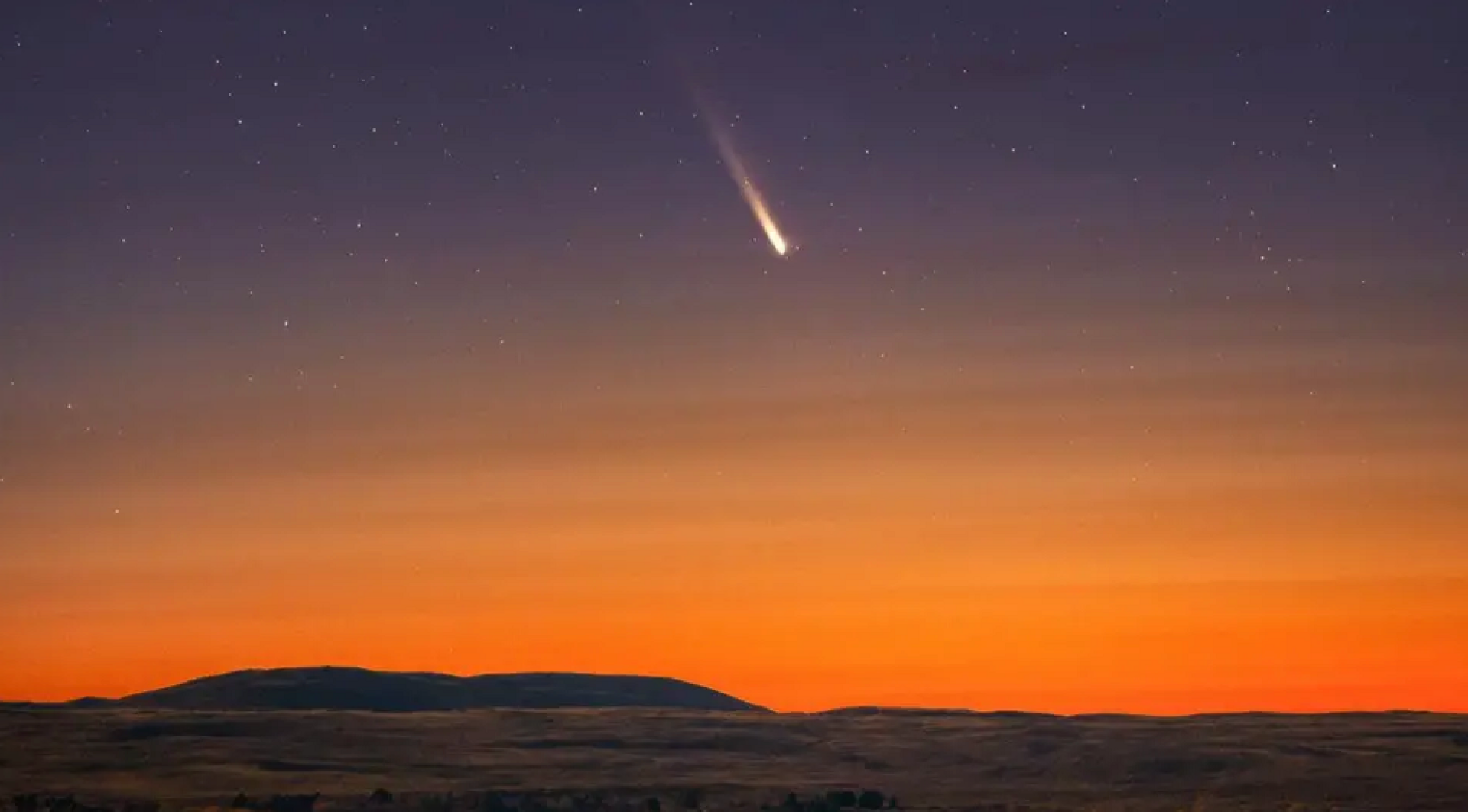How to spot a comet brightening the sky this Autumn

Astrophotographer Max Inwood captured this long-exposure photo of the comet over Lake Pukaki, New Zealand
- Published
If you're a fan of stargazing, then get your telescopes and cameras ready as an unusually bright comet could be set to grace the night skies.
It should be visible in the Northern hemisphere, where the UK is, from around now, but the best views are expected in mid-October.
The comet was first noticed in January 2023, by the Tsuchinshan Observatory in China, and later detected by US space agency, Nasa.
Given the full name of C/2023 A3 (Tsuchinshan-ATLAS). People are calling it Comet A3 for short.
More cool comet stories
- Published5 April
- Published17 November 2023
- Published30 July 2023
What is a comet?
Unlike asteroids, which are made of rock and metals, comets are composed of ice, rock, and gas.
As they approach the Sun, the warmth from our star causes their ice to melt into gases, releasing dust particles trapped within the ice, which is what causes the tail comets are known for.
This latest comet has been visible in the Southern Hemisphere, and is now coming into view for the Northern Hemisphere too.
Since it was first spotted, astronomers have been tracking its progress and watching as it brightens and gets closer to its peak visibility.
But it's difficult to guess how bright each comet will become.
Robert Massey, Deputy Executive Director of the Royal Astronomical Society, says: "Bright comets are quite rare, so if you do get a chance to see one, take a look, even if you have to use a pair of binoculars to pick out the tail and features. They're absolutely beautiful."
How do you spot a comet?
For the next week or so it should be visible in the Northern hemisphere low in the eastern sky before dawn, though you may need binoculars or a telescope.
However, with clear skies it might be possible to see without the need for equipment.
There will be a better chance to see the comet from around 12 October, this time after sunset in the western sky.
"You could go outside and say, 'Wow, there鈥檚 a comet!' without even needing binoculars," Dr Massey says.
"Comets are unpredictable, but we don鈥檛 know when the next one will appear, so don鈥檛 miss this chance," he adds.
Although the comet could become as bright as Comet Neowise, which was a striking sight in 2020, scientists say it is unlikely to reach that level of brightness.
More spectacular space stories
- Published25 September
- Published14 September
- Published16 September
